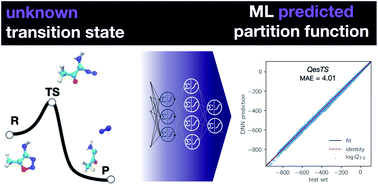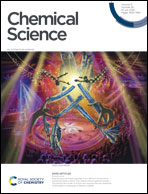Low-cost prediction of molecular and transition state partition functions via machine learning†
Abstract
We have generated an open-source dataset of over 30 000 organic chemistry gas phase partition functions. With this data, a machine learning deep neural network estimator was trained to predict partition functions of unknown organic chemistry gas phase transition states. This estimator only relies on reactant and product geometries and partition functions. A second machine learning deep neural network was trained to predict partition functions of chemical species from their geometry. Our models accurately predict the logarithm of test set partition functions with a maximum mean absolute error of 2.7%. Thus, this approach provides a means to reduce the cost of computing reaction rate constants ab initio. The models were also used to compute transition state theory reaction rate constant prefactors and the results were in quantitative agreement with the corresponding ab initio calculations with an accuracy of 98.3% on the log scale.



 Please wait while we load your content...
Please wait while we load your content...